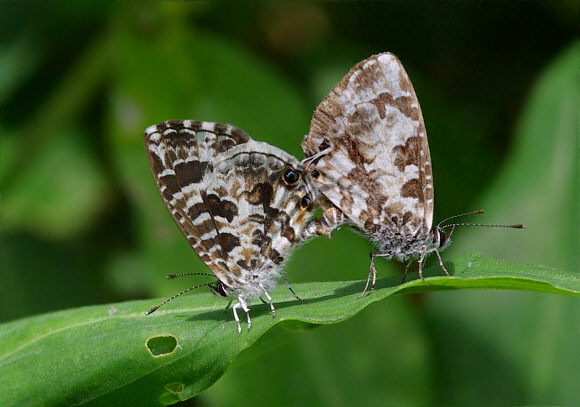
Introduction
There are 10 species in the genus Cacyreus, all of which are entirely African in distribution. One of these – marshalli, was accidentally introduced to Europe from South Africa in 1990, and has since become a serious pest of Pelargonium and Geranium in Spain and France.
Cacyreus can be split into 2 distinct groups, each with differing underside patterns. In West Africa there are 3 species – lingeus, audeoudi and virilis. They can be distinguished by the innermost dark triangular mark on the costa of the underside hindwing. In lingeus the spot is triangular and points downwards. In virilis it is incurved towards the lower thorax, and in audeoudi it is curved outwards and almost meets the tip of the outer dark spot. The uppersides of the males of all three are brown with a metallic violet sheen that is paler and brighter in audeoudi than in the other species. Females of all three are earthy brown with suffused white streaks and a pale violet metallic sheen over the basal area of both wings.
Cacyreus lingeus is a very widespread and common species which occurs throughout Africa with the exception of desert areas.
Habitats
This species occurs in degraded rainforest, open dry forest, acacia scrub, arboreta, gardens, parks and along roadsides. It is found primarily in lowland areas, but also occurs in hill forests and on the lower slopes of mountains and river valleys.
Lifecycle
The larval foodplants include Plastosema, Calamintha, Coleus, Lavandula, Mentha, Salvia, Satureja (Lamiaceae); and Geranium and Pelargonium (Geraniaceae). The larvae are pale green and feed either on the leaves or within the stems of the foodplants.
Adult behaviour
Normally several adults can be found together, nectaring at clumps of flowers in sunny but damp situations e.g. along roadside ditches or by streams that run through forest glades. Both sexes visit flowers, but males additionally can be found imbibing mineralised moisture from the ground.
